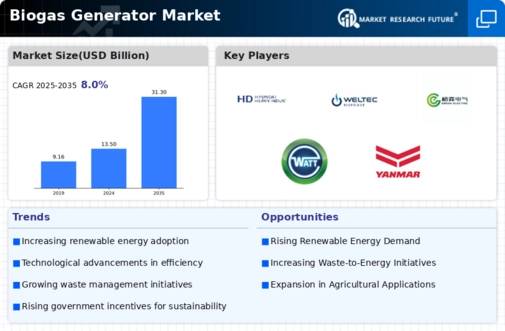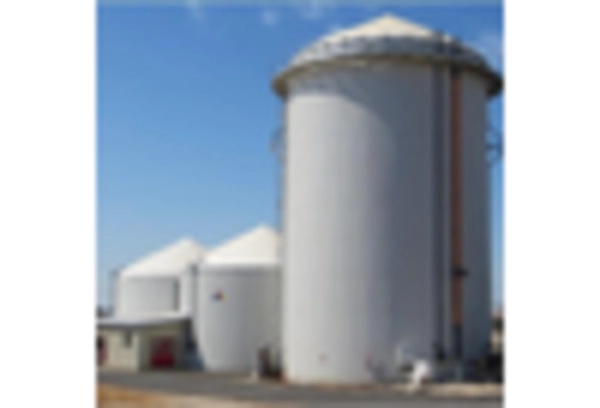Increasing Energy Demand
The rising The Biogas Generator Industry. As populations grow and economies develop, the need for sustainable energy sources intensifies. Biogas generators, which convert organic waste into energy, present a viable solution to meet this demand. According to recent data, the energy sector is projected to grow at a compound annual growth rate of approximately 5% over the next decade. This growth is likely to spur investments in biogas technology, as stakeholders seek to diversify energy portfolios and reduce reliance on fossil fuels. The Biogas Generator Market stands to benefit significantly from this trend, as it aligns with the broader shift towards renewable energy solutions.
Technological Innovations
Technological advancements are transforming the Biogas Generator Market, enhancing efficiency and reducing operational costs. Innovations in anaerobic digestion technology, for instance, have improved the conversion rates of organic materials into biogas. Additionally, the integration of smart technologies, such as IoT and AI, is enabling better monitoring and management of biogas plants. These advancements are likely to attract more investors and stakeholders, as they promise higher returns and lower risks. The market is witnessing a trend towards modular and scalable biogas systems, which can be tailored to meet specific energy needs, further driving growth in the industry.
Waste Management Solutions
The increasing focus on effective waste management is another critical driver for the Biogas Generator Market. With urbanization and industrialization, waste generation has surged, necessitating innovative solutions. Biogas generators offer a dual benefit: they manage organic waste while simultaneously producing energy. Recent statistics indicate that organic waste constitutes a substantial portion of total waste, with estimates suggesting that up to 50% of municipal solid waste is organic. This presents a significant opportunity for the Biogas Generator Market to expand, as municipalities and industries seek sustainable waste management practices that also contribute to energy production.
Rising Environmental Concerns
Growing environmental concerns are increasingly influencing the Biogas Generator Market. As awareness of climate change and pollution rises, there is a collective push towards sustainable energy solutions. Biogas generators contribute to reducing greenhouse gas emissions by utilizing waste that would otherwise decompose and release methane into the atmosphere. Recent studies indicate that biogas technology can reduce carbon emissions by up to 80% compared to traditional fossil fuels. This environmental benefit is likely to resonate with consumers and businesses alike, driving demand for biogas solutions as part of a broader commitment to sustainability.
Government Incentives and Policies
Government incentives and supportive policies play a crucial role in propelling the Biogas Generator Market. Many governments are implementing regulations and financial incentives to promote renewable energy sources, including biogas. These initiatives often include tax credits, grants, and subsidies aimed at reducing the initial investment costs associated with biogas technology. For instance, several countries have set ambitious renewable energy targets, which include a significant contribution from biogas. This regulatory environment not only encourages investment in biogas generators but also fosters innovation within the industry, potentially leading to advancements in efficiency and technology.


















Leave a Comment